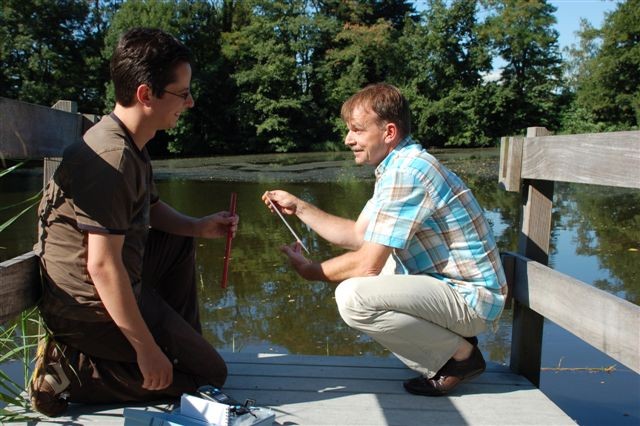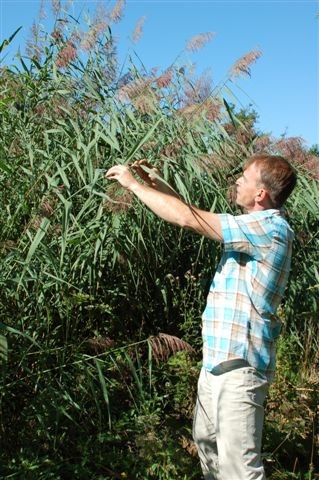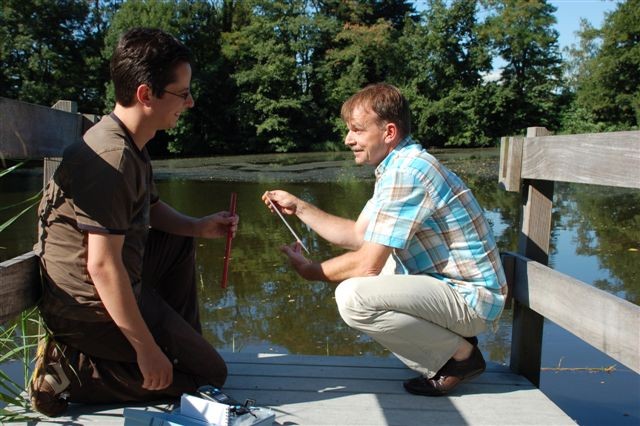SCHINNEN, Netherlands (Oct. 8, 2009): Partnership opportunities at military installations often run the gamut of professional connections between civilian, military and host nation partners. At U.S. Army Garrison Schinnen in the Netherlands, a long-standing partnership with the Dutch Environmental Protection Agency (known as VROM), has enabled the garrison's Environmental Division to fulfill key regulatory mandates with a comprehensive annual report, rather than multiple inspections. This constructive cooperation has produced greater administrative efficiencies and reduced delays in construction procedures.
"It's been an extremely cooperative and productive relationship," said Hans Verwasch, Schinnen's Environmental Division Chief. So productive, in fact, that much of Schinnen's work is now recognized by regional environmental authorities as setting the standard. Last year, for example, Schinnen conducted a survey to identify threatened and endangered species (TES) on the garrison.
Verwasch said that regional authorities were pleased to learn of the study and quickly requested copies.
"Of course, we're happy to know they were interested in our work, said Verwasch, "because it helps Province Limburg create a more complete TES map of this whole area."
The survey found a surprising number of TES on Schinnen, with the highest concentrations at the Schinnen Pond (located on the east side of the garrison), the Duck Pond (in front of the headquarters building), and the Patrol Road (which runs along the back perimeter). For such a small installation-12.67 hectares-the survey revealed an amazing number of flora and fauna: 387 plant species and 369 different kinds of creatures, including bats, newts and dragon flies.
Of those identified, 61 species are legally protected under Dutch environmental law because of their endangered status. An additional 63 species are "red listed" in Germany or the Netherlands, meaning they are threatened or rare.
"Many people think that only highly protected areas such as designated nature protection areas provide habitats for endangered species," said Verwasch. "But this is not the case. Our community at USAG Schinnen also contributes to the conservation of various species by conserving these valuable habitats."
The survey, conducted by the commercial contractor AMEC, used various methods to identify flora and fauna. For example, the bat population was evaluated using a bat detector, headphones and voice recorders. The recorded ultrasonic signals were analyzed using signal conversion software.
"That was fairly high-tech," said Verwasch, "but other, less technical methods were used for different species." The 11 species of dragon and damselflies, for instance, were all identified after capture in a sweeping net. Amphibians were surveyed visually during the day and at night by brightly illuminating the shore areas of the ponds. Live traps were set overnight. Nothing was harmed or damaged during the identification process, according to Verwasch. "That would have defeated the purpose of the survey," he said.
Because Schinnen already maintains high environmental standards, the survey results did not change any current operations. Verwasch says the Environmental Division hopes to improve existing conditions that foster greater numbers and diversity of species in the future. "It's just something that a good partner would do," he said.
Schinnen's Environmental Division also partners with the Dutch Ministry of Agriculture, Nature and Food Quality (known as LNV in Dutch) on a variety of environmental actions. Permits are required any time an environmental action is undertaken, such as planting or cutting trees or introducing certain fish species into the Schinnen Pond. Thanks to cooperation between the Ministry and Schinnen officials, advance consultations on all these planned actions are easily arranged, which streamlines the permit process, Verwasch said.
"Partnering with our local, regional and national host nation authorities is a way of business here at USAG Schinnen," said Verwasch. "As the only U.S. installation in the Netherlands, this just makes sense as a way to do business but also as a way to be a good neighbor too."






Social Sharing